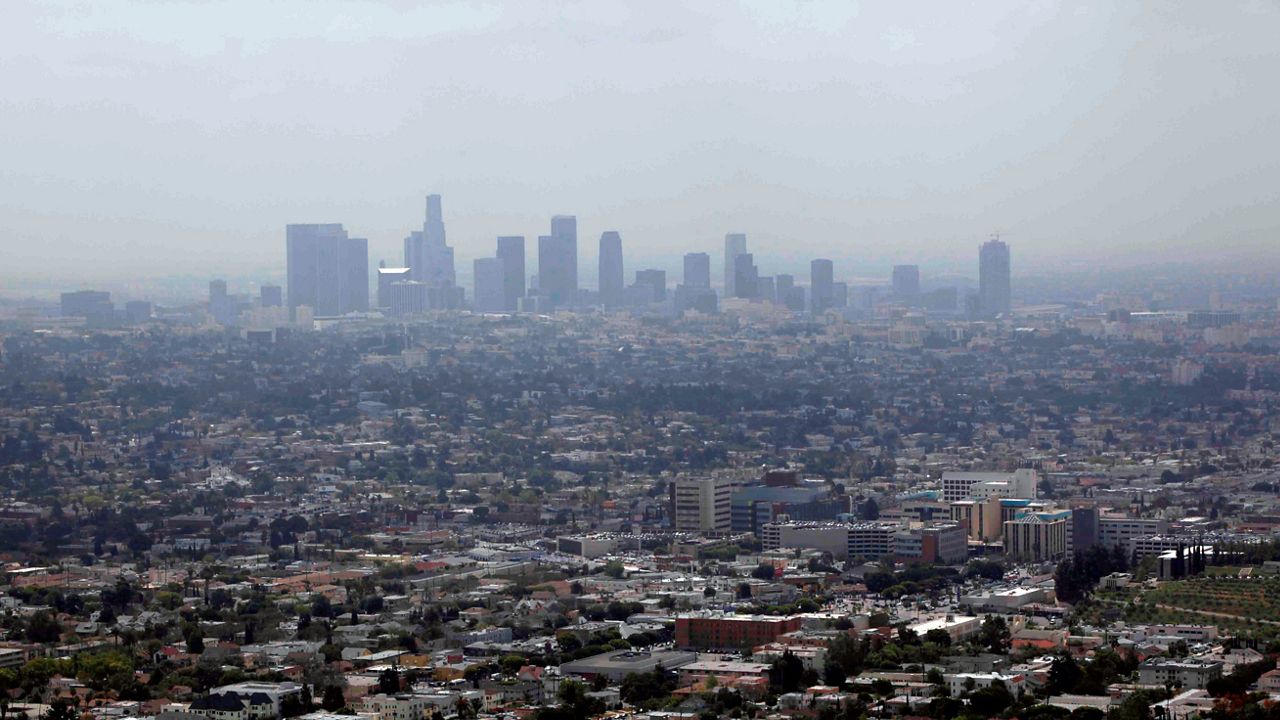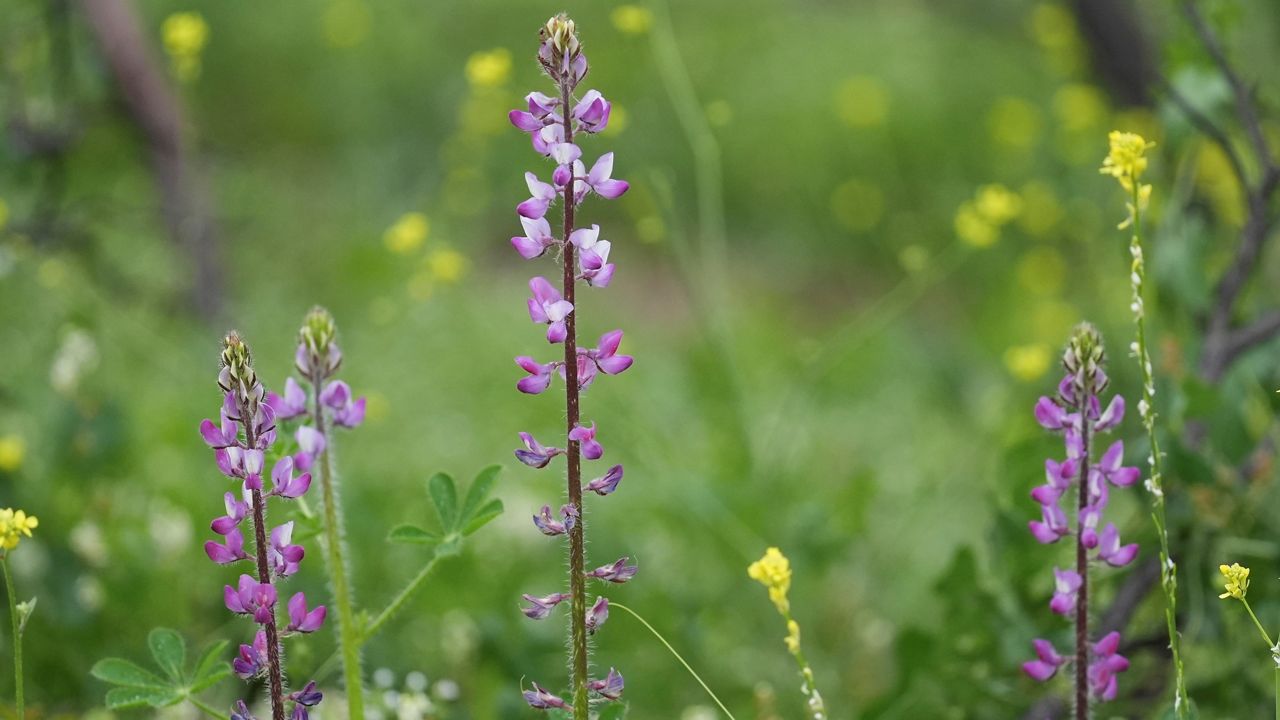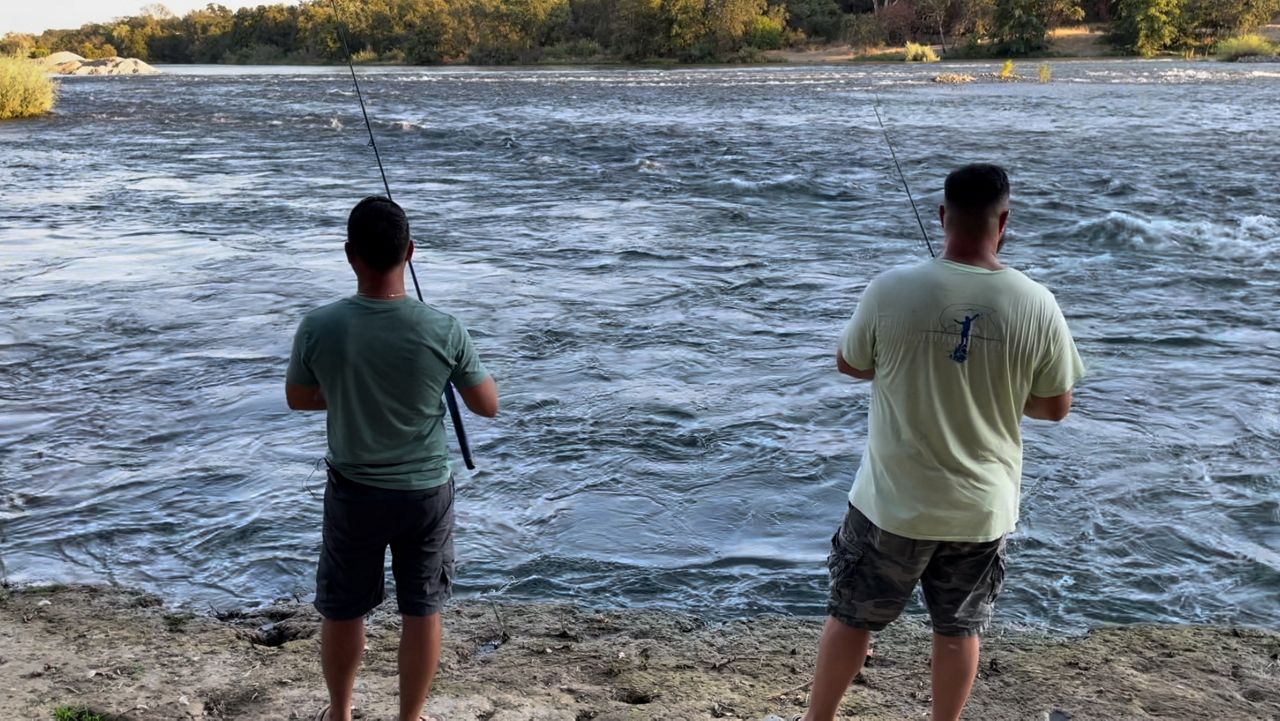CALABASAS, Calif. — Construction on the Wallis Annenberg Wildlife Crossing has begun and while bulldozers and diggers can be seen at work along the 101 Freeway, Katherine Pakradouni has been getting her hands dirty for months already.
“This is black sage,” she said, spilling the contents of a small envelope into her palm and presenting thousands of tiny seeds.
Pakradouni is the project’s nursery manager and, in a way, the future of the bridge pretty much lies in her hands.
She has spent months scouting around the site in Agoura Hills and through the mountains, hand harvesting seeds, such as purple aster.
“I just literally like, boop!” she said as she pinched the soft fuzz between two fingers.
She has roughly 60 species collected so far and keeps meticulous notes, a map detailing where she’s collected, a spreadsheet listing the exact spot of earth through GPS coordinates. She’s careful not to deplete too many seeds from any one area and to cull from both sides of the future crossing.
“Then that genetic mixing gets to happen across the bridge,” Pakradouni explained. “Just like we want to happen for the mountain lions, we were having that happen with the plants as well.”
This entire project is a massive undertaking that will eventually include four terraces holding fifty 12-foot tables covered in seedlings. Pakradouni has had to plan way ahead, right down to the soil that she plans to enrich with ectomycorrhizal fungi. She’s got brown papers bags filled with what’s commonly called Dead Man’s Foot, which she admits, “generally looks like doggie doo,” but which will serve a tremendously important purpose — living in a symbiotic way with the coast live oaks that also will be planted at the site.
“So that we’re not only planting the plants that are meant to be here, we’re also planting their indigenous microbiota counterparts underground,” she said. “And that’s something that’s not being done in almost any other place. Especially not on a big project like this.”
The result will grow to become what she calls a biodiversity magnet that will attract animals to the site.
“We’re going to be putting so much of their food source in that area that it’s going to teach them how to cross that bridge,” Pakradouni explained.
Overseeing all of this is Robert Rock of Living Habitats, LLC, a landscape architecture and ecology practice based out of Chicago. He specializes in connectivity projects like this that he says need to be intricately layered.
“It’s funny, because when I talk about being a landscape architect, everyone, you know, goes to the green right away,” he said. “But really, for us, projects like this are about all those different layers melded together.”
He’s been connected to the project for around three years and says the groundswell of support for the project that he’s witnessed has been astounding. So much about the wildlife crossing at Liberty Canyon has captured the attention of people locally and around the world, and the way they intend for flora to claim the bridge is a big part of that.
“Because it’s not just about adding some green fluff on top of the structure. It’s about connecting all the way through to the genetic level,” Rock pointed out. “We’re establishing a new framework. We’re recreating this natural habitat. And the idea is to plug things back in, in such a way where they are self-sustaining, so that we’re recreating a space that will persist.”
He recently visited not just the site of the seed nursery but the site of the future crossing. Now that bulldozers are actually at work, moving earth along the south side of the 101, everything feels very real for Beth Pratt, who spent the past decade moving heaven and earth to make the bridge possible.
“I pulled up, and a bulldozer was going down a slope, which I couldn’t believe they were able to maneuver,” she beamed in front of the construction site. “It shows that even a freeway is not irredeemable!”
She said so far it’s been kind of minor work, relocating a pipe for instance, but added, “Get ready! The construction happening here is going to start being really noticeable!”
Pratt, who is the California regional executive director for the National Wildlife Federation, led a group up a steep hike to the top of a nearby hill to get a bird’s-eye view of the site and a closer look at a camera that will be documenting the entire process with a time lapse as well as constant updates available on the Save LA Cougars website.
“I have it on my desktop,” she laughed. “I refresh it so frequently just to see things happening!”
As P-22’s biggest fan, she obviously loves the mountain lions, but she said the bridge is about so much more and that’s where the plant nursery comes in.
“It’s important that we actually put a robust native ecosystem on top of this bridge,” Pratt explained, “not just to convey animals over the freeway but to have animals living on it, monarch butterflies, lizards, you name it.”
Rock sees it another way, too, although he doesn’t like to say it in front of Pratt.
“For me, it’s so much more about the people that are involved,” he admitted. “It’s so much more about how this will serve Los Angeles as a whole and this community from now into the future.”
As for Pakradouni, this project goes back to her roots. Although she casually refers to plants by names such as asclepias fascicularis and salvia leucophylla, she said she got into botany because of her deep love for animals.
“That’s why plants became so important to me, because I realized how much the native plants are integral to the survival of animals,” she said. “Everything from the tiniest insect all the way up to the mountain lion is dependent on plants, because it either eats plants or it eats an animal that eats plants, or it’s an animal that eats an animal that eats an animal that eats plants. And so, all the way up the food chain, our mountain lions are dependent on these plants.”
In that way, she said working on the future wildlife crossing truly bridges her two passions. It’s patient, meticulous, miniscule work, but when all is said and done, the bridge will have her fingerprints all over it.











